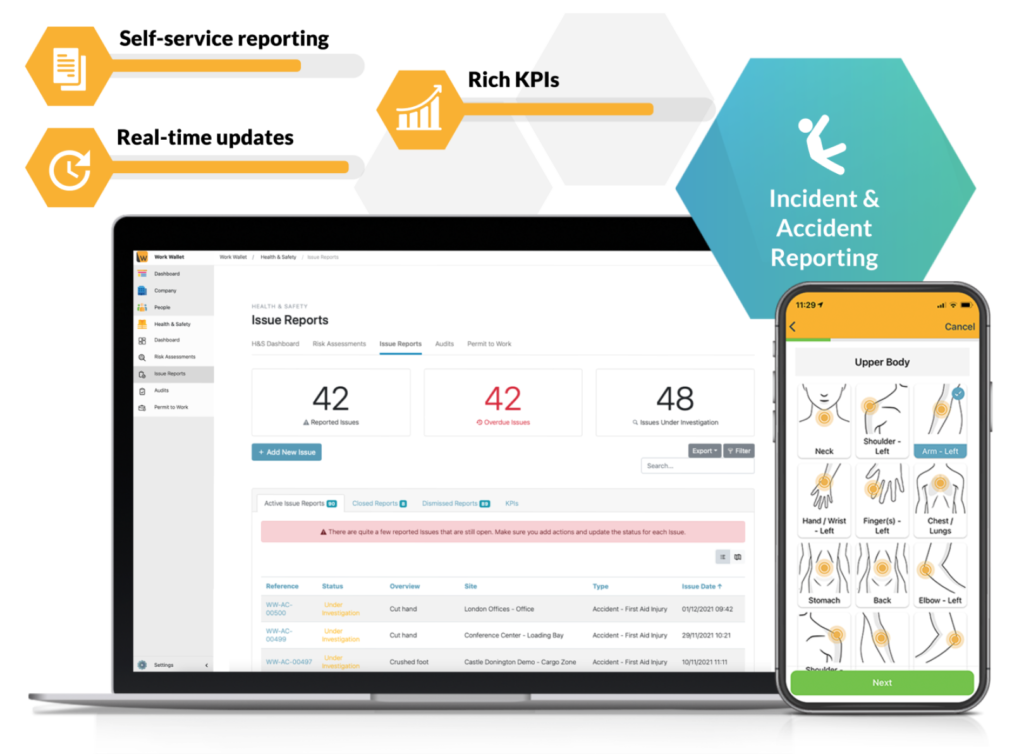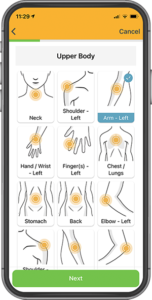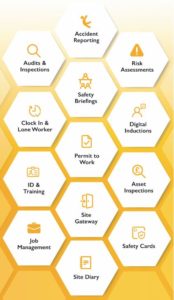Accident Report form completion: Information you need to know
When an accident occurs, it is important to have accurate information about what happened. Completing an Accident Report form is essential.
24 June 2022

When an accident occurs, it is important to record accurate information about what happened on an Accident Report form. This will help ensure that everyone involved is safe, and that any necessary steps are taken to prevent future accidents from happening.
In this blog post, we will discuss the information that needs to be recorded in an Accident Report form. We will also talk about how using digital health and safety software can benefit your business by providing a paperless reporting system.
What incidents need reporting?
 Under RIDDOR -The Reporting of Injuries, Diseases and Dangerous Occurrences Regulations 2013 - there are four main categories of incident that must be reported: deaths, major injuries, over-seven-day injuries, and dangerous occurrences (also known as near misses).
Under RIDDOR -The Reporting of Injuries, Diseases and Dangerous Occurrences Regulations 2013 - there are four main categories of incident that must be reported: deaths, major injuries, over-seven-day injuries, and dangerous occurrences (also known as near misses).
Not reporting these specific types of incidents is a criminal offence, and can potentially lead to unlimited fines from enforcement by the regulator (the HSE). Therefore, it's important to get it right.
You may want a more complete record of all accidents though, including minor ones, to get a complete overall picture of what is happening in your workplace.
What to include on your Accident Report form
By law, there is a minimum amount of information that you must record about each accident, incident or near miss that happens, in order to satisfy the regulator.
This is:
- The date of the incident
- The location of the incident
- The names of those involved
- A description of what happened
- The name and contact details of the person making the report (if different from above)
Capturing this data in your Accident Report form will give you a basic picture of what has happened and, with some manual analysis, may provide useful insights in the "why". Hopefully, you'll also be able to spot trends in your data, isolating causes to stop things happening again.
But what about other vital information that could enhance your reporting, such as witness details, and pictures and video of the circumstances?
Paper-based Accident Report forms are difficult to use effectively, taking time and effort to complete. Additionally, forms are often not completed at the time of the incident - so you are unable to capture some of the best contextual data.
Paperless Accident Report forms solve your reporting problems
 Going digital with your Accident Report forms - such as with Work Wallet's Accident & Incident Reporting app - can help you to benefit from dynamic, paperless, multimedia reporting.
Going digital with your Accident Report forms - such as with Work Wallet's Accident & Incident Reporting app - can help you to benefit from dynamic, paperless, multimedia reporting.
This means that you can easily include things like photos and videos in your reports, instead of just words on a page. This can be extremely helpful in providing a clear picture of what happened during an accident or incident.
Additionally, you can complete paperless Accident Report forms quickly and easily on a mobile device. This means you can capture information about an incident instantly at the scene, while it's still fresh in your mind. This is vital for getting accurate details about what happened.
You can also involve your employees more, as mobile reporting is more collaborative, and simple to use. For example, you can ask employees to submit their own Accident Report forms via the app. This removes reliance on managers or supervisors to do it for them.
Furthermore, Work Wallet's reporting fields are fully flexible. They can pre-defined by a manager for speed and ease of use, and include free text options. The app includes image-based injury selection too.
This saves time and ensures that everyone feels they play a part in improving health and safety in the workplace. This is vital for engendering a strong safety culture.
Simple data analysis saves lives
You benefit from enhanced data analysis with paperless Accident Report forms too. Your information is all stored digitally and securely in the Cloud, accessible at any time.
With Work Wallet, the built-in reporting dashboard does much of the leg-work for you. You can spot trends and issues quickly that need to be addressed.
For example, if you notice that a particular accidents are happening frequently, you can take steps to address the issue. Therefore, you prevent it from happening again in the future.
Work Wallet is here to help
 Overall, using a paperless Accident Report form - such as Work Wallet's Incident & Accident Reporting app - provides many benefits for businesses. These include saving time, increasing productivity, reducing costs on paper, printing and storage, and improving workplace health and safety.
Overall, using a paperless Accident Report form - such as Work Wallet's Incident & Accident Reporting app - provides many benefits for businesses. These include saving time, increasing productivity, reducing costs on paper, printing and storage, and improving workplace health and safety.
Available from only £2.50 per user per month, it's an affordable and flexible solution to your accident reporting problems. As a standalone module in its own right, it also integrates with the wider suite of Work Wallet's essential safety features.
If you would like to learn more about how Work Wallet can help you with paperless Accident Report forms, please get in touch for a demonstration.
Share post
More Posts
Which Incident Management Tool is right for you?
Jun 2022
When it comes to health and safety, one of the most important decisions you'll make is which Incident Management tool...
RIDDOR reporting: What you need to know
Jun 2022
If you're responsible for health and safety in the workplace, then you need to be aware of RIDDOR reporting.




